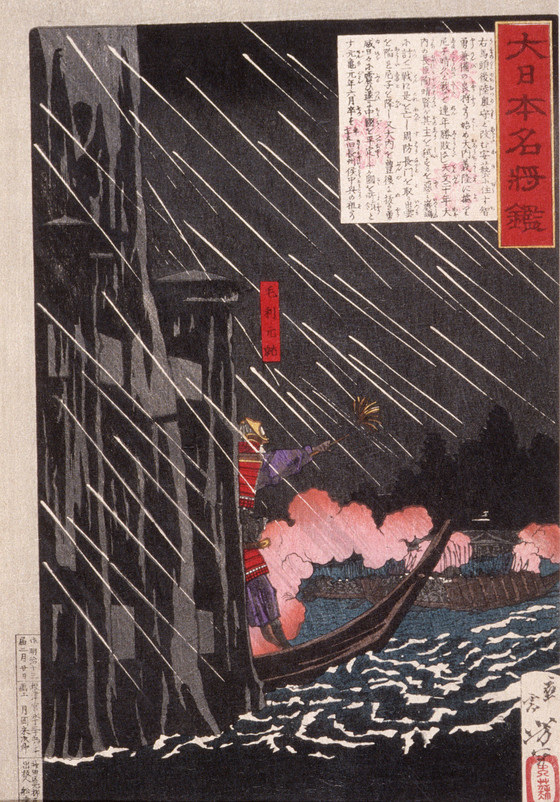Mōri Motonari Attacking Sue Harutaka at Itsukushima

Please log in to add this item to your gallery.
View comments
No comments have been posted yet.
Add a comment
Please log in to add comments.
Please log in to add tags.
* Nearly 20,000 images of artworks the museum believes to be in the public domain are available to download on this site.
Other images may be protected by copyright and other intellectual property rights.
By using any of these images you agree to LACMA's Terms of Use.
Mōri Motonari Attacking Sue Harutaka at Itsukushima
Alternate Title: 毛利元就
Series: A Mirror of Great Warriors of Japan
Japan, 1880, FebruaryPrints; woodblocks
Color woodblock print
Image: 13 3/8 × 9 1/16 in. (33.97 × 23.02 cm)
Sheet: 14 1/8 × 9 3/4 in. (35.88 × 24.77 cm)
Herbert R. Cole Collection (M.84.31.247)
Not currently on public view


